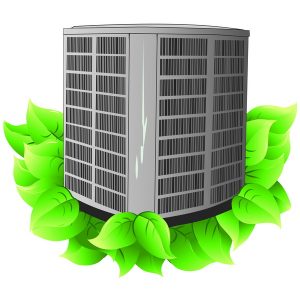
We aim to help our customers save money while enjoying comfort. We put it in our slogan: “Live Green, Save Green.” One of the ways to save money while helping the environment is to invest in HVAC equipment with improved energy efficiency. The more efficient a device, the less energy it consumes to provide comfortable temperatures for a household. There’s also less energy taken from power plants, which helps everyone to live greener.
This is why we encourage looking into high-efficiency air conditioning in Modesto, CA. We’re going to examine the efficiency ratings of modern air conditioning systems and what they mean—as well as how to ensure they make a difference for you, since a high-efficiency rating isn’t a guarantee of savings, although it puts you on the right path.
EER and SEER: The Two Basic Efficiency Ratings
Air conditioning systems have two efficiency ratings you will see listed, often prominently: energy efficiency rating (EER) and seasonal energy efficiency rating (SEER). They’re different by only one word because they use almost identical methods to measure how efficiently an air conditioner converts electrical power into cooling power.
EER is a ratio of the amount of cooling power (in British Thermal Units, or BTUs, removed from the air) the AC provides to the amount of electricity (in watt-hours) consumed as tested under specific conditions. The higher the EER rating, the more efficient the unit can perform.
SEER is the same ratio of cooling power to electricity. The difference is how it’s measured. Where EER is done as a single test under one set of temperature and humidity conditions, SEER is the average of multiple tests done with a range of temperatures and humidity conditions. These tests are designed to imitate an entire season of cooling to give the consumer a sense of the overall summer performance of the air conditioner. SEER is always higher than EER.
What to Look for in These Ratings
“What’s a good SEER/EER rating?” is probably the big question you have now. The easy answer is that you should only look for AC systems with SEER/EER high enough for the system to qualify for the US Department of Energy’s ENERGY STAR label. The current ENERGY STAR requirements are SEER/EER of 15/10 or higher. Special high-efficiency systems score higher than this, but they also cost more. We can help you with finding the right efficiency to meet your needs and budget.
A Caution About Efficiency Ratings
Saving energy is about more than picking the highest SEER/EER rating you can find and then calling it a day. These efficiency ratings are the maximum performance from an air conditioner—they don’t mean a system will perform that well all the time. If you have a bad installation from amateurs or an air conditioner that isn’t sized correctly for your house, the AC won’t perform at the efficiency you want. SEER/EER are important, but they aren’t the final word on energy efficiency. Let us help you receive the best when it comes to choosing a unit and installing it.
Greenhart helps you “Live Green, Save Green.” Reach out to us if you have any questions about installing a new air conditioning system in your home.

